What is regenerative agriculture? This Whanganui farmer explains how it works on his land
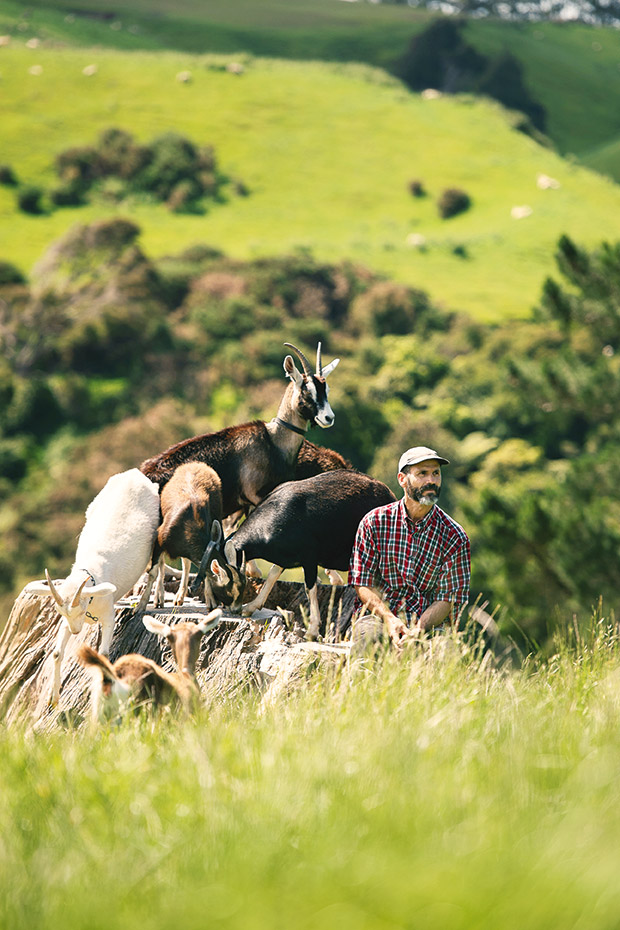
Regenerative agriculture is a term thrown around more and more frequently, but what exactly is it and how can it be practised on a lifestyle block in New Zealand?
Words & images: Nelson Lebo Additional images: Brad Hanson
Who: Nelson & Dani Lebo
Where: Kaitiaki Farm, 10km east of Whanganui
What: permaculture, regenerative agriculture
Land: 5.1ha (13 acres)
Decades ago, the farming buzzword was environmentalism. Then it became sustainability, and more recently resilience. Now it’s regeneration.
I never set out to practice regenerative agriculture. My goal was to grow food with minimal inputs while healing the land and managing water balance. Only in retrospect does it appear that my mish-mash of approaches on a marginal piece of land aligns with the aims of regenerative agriculture.
Every block is unique, and every owner will go about things differently. In this story, and in a second part next month, you’ll see examples of how we practice it on our block and why we’re always learning, adjusting, and adapting to challenges as we go.
Principle 1: Improving soil health & fertility
Soil is the soul in this kind of growing system, contributing significantly to plant productivity and health, animal health and growth, and water movement. Since we bought our block in 2014, our top priority has been building and improving its soil.
Our block is only 5.1ha (13 acres), but it has an abundance of soil types, topographic features, and micro-climates. We’ve tried to assign each part of the property with a job that suits it best – garden, grazing, orchard etc – while also applying slightly different approaches to improving the soils underfoot.
7 GOALS OF REGENERATIVE AGRICULTURE IN NEW ZEALAND
Even the experts are still refining the definition of regenerative agriculture. The problem, as Manaaki Whenua – Landcare Research makes clear in its reports (see more below), is that regenerative agriculture is “farmer-led, highly adaptive, and context-specific.”
From the sources (see below), I’ve compiled a list of seven goals of regenerative agriculture:
• improving soil health and fertility;
• increasing the resilience and nutritive quality of crops and livestock;
• improving water infiltration and retention;
• increasing biodiversity and the health of the ecosystem;
• sequestering carbon from the atmosphere;
• employing low-input methods and reducing dependence on agri-chemicals;
• embracing a systems approach.
The basics of regenerative agriculture
Regenerative agriculture (RA) is a system of farming principles and practices that increases biodiversity, enriches soils, improves watersheds, and enhances ecosystem services.
RA aims to:
• create healthier, more vital farming communities;
• capture carbon in soil and aboveground biomass, reversing current global trends of atmospheric accumulation;
• increase yields;
• increase resilience to climate instability;
It’s based on decades of scientific and applied research into organic farming, agroecology, holistic management, and agroforestry.
RA practices include:
• no-till farming and crops;
• organic annual cropping;
• the use of compost, compost tea, biochar, terra preta (dark soil);
• integration of trees, forage, and holistically managed grazing of domesticated animals;
• ecological aquaculture;
• perennial crops.
THE FLAT PASTURE PADDOCKS
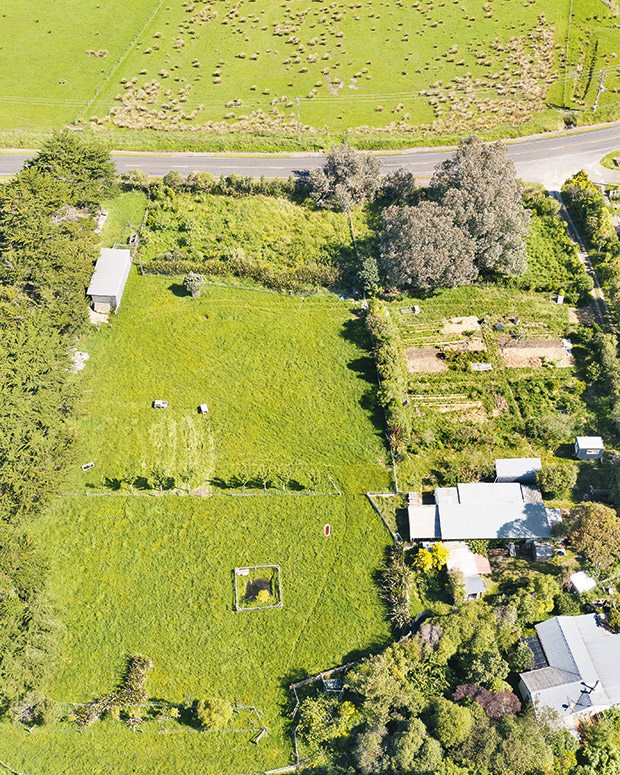
Size: 2x 1000m² (quarter acre)
Problem: previously used to graze horses and rear calves. Soil was compacted, acidic, lacking in organic matter, pugged in winter, bone dry in summer, only able to support plants not generally palatable to stock.
Our approach to improving the soil included:
• removing heavy stock;
• raising the pH with lime and wood ash;
• running Muscovy ducks to feed soil biology with their poo;
• rotating goats and kune kune pigs through on a regular basis.
THE ORCHARDS
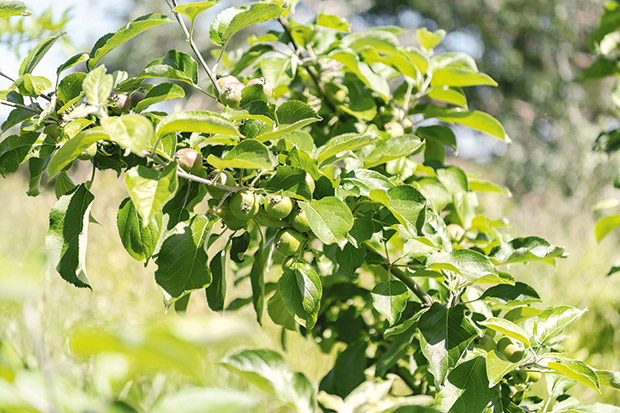
Size: 1500m²
Problem: very wet soil
We’ve established several fenced orchards, populating them with chickens, Muscovy ducks, and/or kune kunes at various times of the year. The animals happily graze the grass and eat any fallen fruit, which – along with any supplemental feed provided by us – becomes food for soil organisms as it passes through their digestive systems in a matter of hours.
THE HILLSIDES
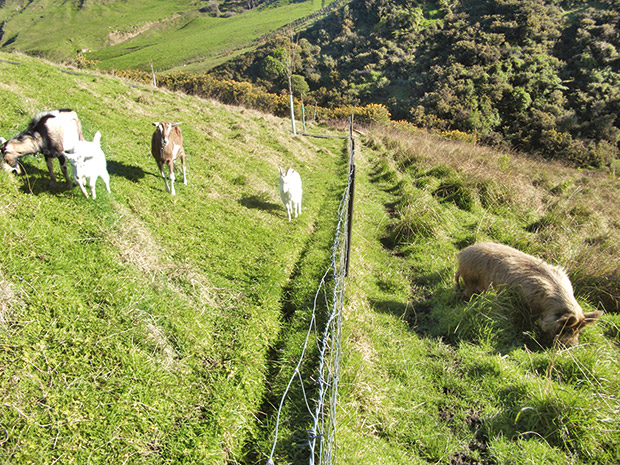
Size: 1ha+
Problem: steep, slip-prone, north-facing so dried out by hot, summer winds making them a fire risk.
We’ve experienced both landslips and fire on these hillsides. The main focus for soil in this area has been to keep it from sliding away. We’ve split the area in half and used different management practices based on plant-animal pairings that suit our needs and the needs of the land.
On the rougher side, we graze dairy goats on pasture, interplanted with hardy Veronese poplars. The 3-metre poles were purchased from Horizons Regional Council along with blue plastic sleeves to protect them.
We rotate the goats through regularly. They also get poplar and willow prunings in summer and autumn, and pine, macrocarpa, and native prunings in the winter and spring. As the goats digest the leaves, twigs, and bark, they distribute their pelletised manure across the grassed areas, improving soil health and fertility.
We’ve found this to be a good system that allows us to produce food from a very marginal piece of land. Simultaneously, we’re also retaining and building soils, which improves water distribution around the block, holding it in the soil.
On the other side, we’ve paired kune kune pigs with a range of drought-resistant trees, including:
• manuka;
• ake ake;
• karo;
• tree lucerne/tagasaste (also fixes nitrogen);
• olives.
The pigs happily graze the grass but don’t eat the trees, allowing us to plant hundreds of them without the need for stock defences.
WETLANDS AND RIPARIAN CORRIDOR
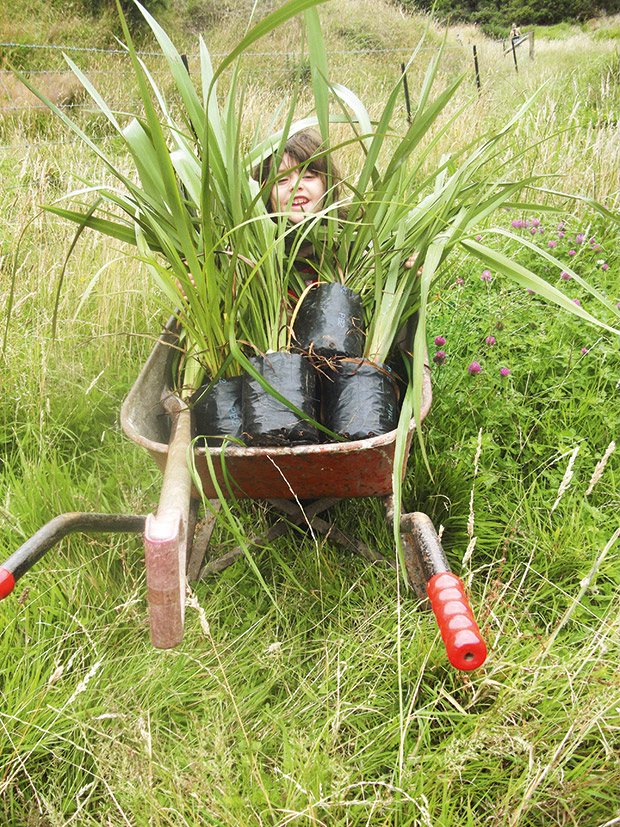
Size: 0.8ha
Problem: denuded of plants, formerly grazed by large stock
Purua Stream flows through the bottom of our property, and the flat area around it was once a wetland. To restore it, we have fenced the entire area and planted a combination of native wetland species and non-natives known to help retain stream banks. We trust the hydric soils will look after themselves now we’ve given them some protection and a head start with revegetation.
THE FOOD GARDENS
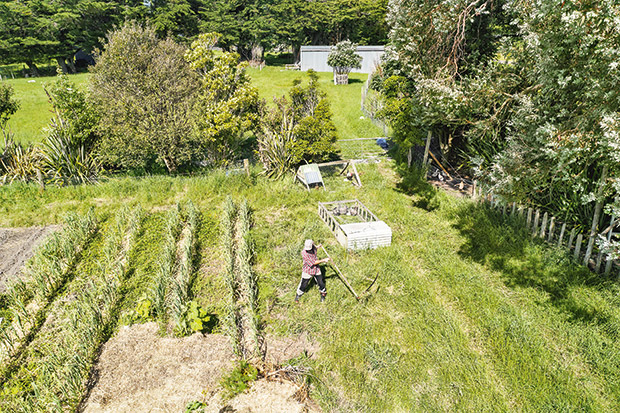
Size: 1200m²
Our garden beds represent the most directed and intensive approaches to building and improving soils. We embrace a no-dig philosophy while adding copious amounts of home-made compost, mulch (grown on site), and judicious quantities of clay breaker.
WHY WE CREATE ‘HUGEL’ MOUNDS
We provide browse to our goats on nearly a daily basis. They strip off the foliage and bark, leaving us with significant quantities of twigs and branches. We use some of it as tinder and kindling for our wood burner in winter, but most is added to raised hügelkultur mounds we’ve created to elevate our fruit trees above the seasonally sodden soils.
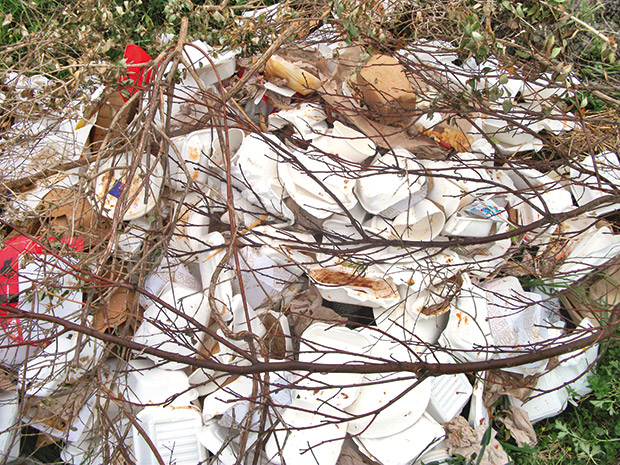
Depending on the time of year, we also add excess cardboard and paper we have on hand, and in the past biodegradable takeaway containers from ‘zero waste’ truck food events. As we dig drains and swales, the soil is placed on top of the limbs. These begin to break down, creating a slow-motion, underground compost heap.
WHERE I’M FINDING INFORMATION
I’m referencing the work on RA from three sources which represent broad perspectives on the topic:
1. Manaaki Whenua – Landcare Research New Zealand
2. Regeneration International
3. Greenpeace Aotearoa.
Their perspectives are meant to be representative, not exhaustive.
1. Manaaki Whenua – Landcare Research
It sees RA as first and foremost a management system driven by biodiversity through the promotion of ecological synergies within what it calls the ‘agroecosystem.’
The key is building healthier soils, leading to healthier plants and animals, and reducing a farmer’s dependence on agrichemicals. There are also flow-on benefits for water balance and water quality. However, they don’t (yet) outline what they call a ‘marketing friendly’ succinct definition of regenerative agriculture for two reasons:
• the risk of constraining an evolving concept;
• the need for any New Zealand definition to be anchored in te ao Māori (the Māori worldview), which is still being worked on.
“Our research examined people’s understanding of regenerative agriculture through outcomes, principles, practices and mindset,” says research co-lead Sam Lang, farmer and manager of the Quorum Sense farmer extension project. “We found that all are important. While it is tempting to focus on novel or innovative practices, exploring the influence of farming principles and farmers’ mindsets could be more valuable.”
Read its comprehensive reports from October 2021 at ourlandandwater.nz
2. Regeneration International
It emphasises improving soil health primarily by employing practices that increase organic matter. As a holistic approach to land management, it says regenerative agriculture “leverages the power of photosynthesis” to drive improvements in the health of the land, while also closing the carbon cycle and addressing issues of climate change.
Read more regenerationinternational.org
3. Greenpeace Aotearoa
It describes regenerative agriculture in relation to other farming practices that may be better known such as organic farming, biodynamics, and permaculture, ‘ecological farming’ and ‘agroecology.’Read more at greenpeace.org/aotearoa
This isn’t a comprehensive list, but these resources identify enough of the main points to highlight individual targets within the greater objective. It should be noted that there are significant synergistic effects when practicing regenerative agriculture due to the overlapping and self-reinforcing nature of the principles I outlined above.
HOW I GOT INTO REGENERATIVE AGRICULTURE
For most of the last three decades I’ve thought of regenerative agriculture as more or less synonymous with the holistic management and rotational grazing approaches advocated by Allan Savory in Zimbabwe. I read about his methods in the 1990s and visited ranchland in the American West that had experienced remarkable transformation using these types of practices.
A decade later, I found myself in a crowded auditorium at an organic farming conference in Massachusetts, listening to author Joel Salatin of Polyface Farm explain similar strategies for land management on his farm in Swoope, Virginia. Not long after that, Joel became widely known following the publishing of Michael Pollan’s bestselling book The Omnivore’s Dilemma.
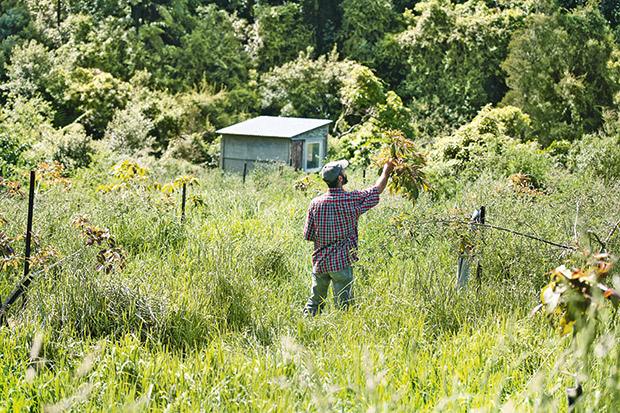
More recently, a friend recommended I read Call of the Reed Warbler by Australian farmer Dr Charles Massy. Massy writes about his experiences and those of other innovative farmers engaged in new and different ways of growing food while addressing climate change, soil erosion, water quality, and biodiversity loss.
I find the work of these men fascinating and inspiring. We adopted these types of philosophies for managing livestock on our block in 2014. Seven years later, the land and animals are thriving, and I’ve learned that regenerative agriculture is more than just carefully managing grazing animals.
WHO IS CHARLES MASSY?
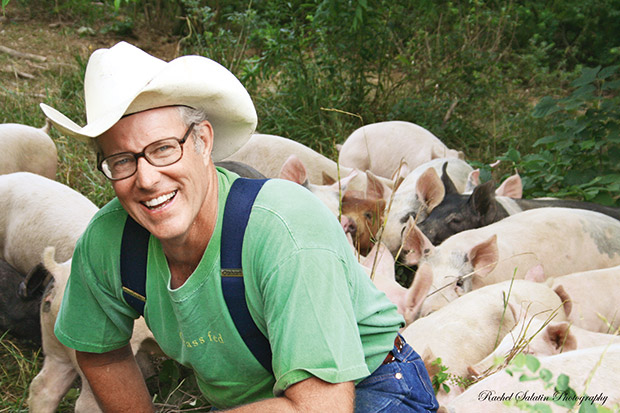
Australian sheep and beef farmer Charles Massy has advocated for regenerative farming practices since his farm went through a massive drought in the early 1980s. He returned to university in 2009 after 35 years of farming, earned a PhD in human ecology, and now writes and teaches about regenerative practices. In 2017, he wrote Call of the Reed Warbler on regenerative agriculture and the vital connection between soils and human health.
WHO IS ALLAN SAVORY?
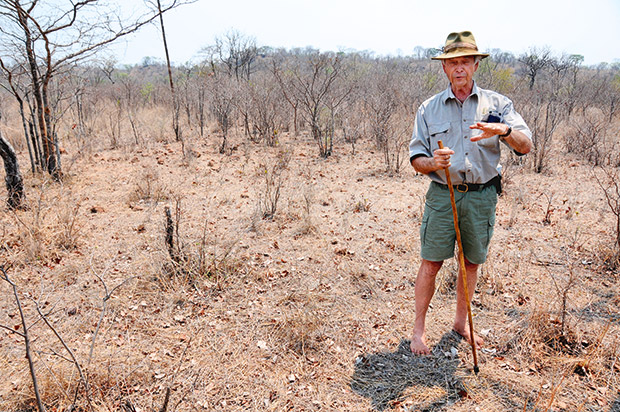
Allan Savory is a Zimbabwean rangeland ecologist and pioneer of the regenerative agriculture movement. In the 1960s, he began developing Holistic Management (HM), a new method for managing complex living systems, with a focus on land and livestock, and regenerating pasturelands and other habitat.
He initially developed HM to halt the spread of desertification. Livestock had long been blamed for creating deserts, but Savory realized it was how the livestock were managed that was the problem, and devised methods to cooperate with nature, rather than try to control it.
Source: savory.global/holistic-management
Love this story? Subscribe now!
 This article first appeared in NZ Lifestyle Block Magazine.
This article first appeared in NZ Lifestyle Block Magazine.
